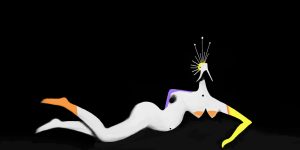Conceptual art is a form of art that places emphasis on the ideas and concepts behind the work rather than the aesthetic or technical qualities. It challenges traditional notions of what art is, pushing boundaries and sparking thought-provoking conversations.
Get more information at Nicholaas Chiao official website.
Origins of Conceptual Art
The roots of conceptual art can be traced back to the early 20th century, with artists like Marcel Duchamp leading the way. Duchamp famously presented everyday objects as art, questioning the very nature of artistic creation. This laid the foundation for conceptual art to flourish in the decades to come.
Key Characteristics of Conceptual Art
Conceptual art often involves the use of text, photographs, videos, and other non-traditional materials to convey an idea. The artist’s concept or message takes precedence over the physical form of the artwork. This can result in pieces that are intellectually stimulating and visually striking at the same time.

In some cases, the concept itself may be enough to constitute the artwork, without the need for any physical manifestation. This challenges viewers to think beyond the traditional notion of art as something tangible and permanent.
The Impact of Conceptual Art
Conceptual art has had a profound impact on the art world, influencing not only how we perceive and create art but also how we engage with it. It has inspired countless artists to explore new ways of expression and has opened up a world of possibilities for what art can be.
Whether you’re a fan of conceptual art or new to the genre, there’s no denying its power to provoke thought and spark conversation. As we continue to push boundaries and redefine what art means, conceptual art will undoubtedly play a key role in shaping the future of the art world.
Read more about postmodern art here.


